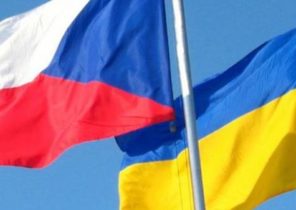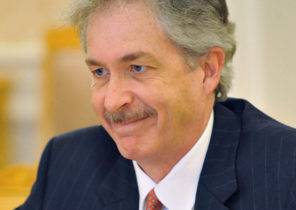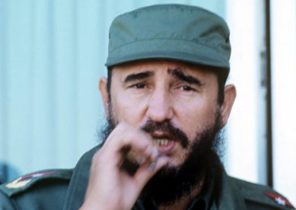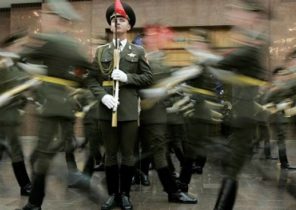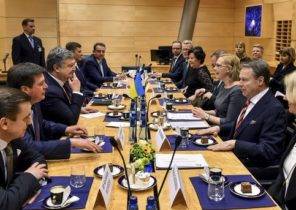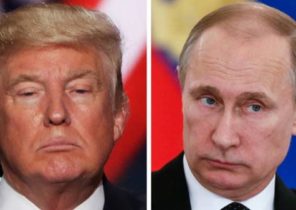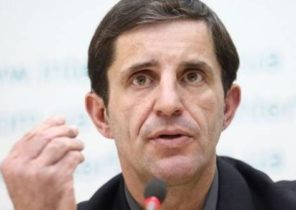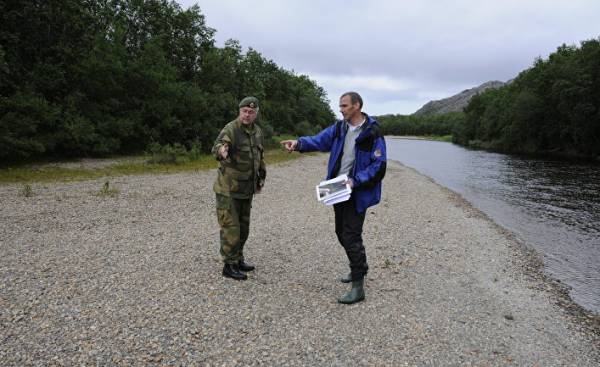
What is the relationship between Norwegians and Russians living in the North? In the series “What we love” VG decided to take a closer look at all the things to complain about Norwegians — to show that somewhere things are better than we think.
VG went to Kirkenes to measure the temperature of the neighbourhood in the border area.
1. The mayor
The Barents region:
*Thirteen counties, and regional entities in Norway, Sweden, Finland and Russia.
The population is almost 6 million people.
*1.75 million square kilometers (almost five times larger than mainland Norway).
The first stop is at the town hall, where a representative of the Norwegian labour party mayor of rune Rafaelsen (Rune Rafaelsen, AP) brings us coffee and local history.
“Kirkenes for centuries been multicultural, but the border never much tension was not. Pen and brown wanted to work with Olga and Vladimir. The most important peace activists in Norway — people like Willie Bangsund (Willy Bangsund), they are more than a thousand trips with children and young people on the other side of the border.”
Cooperation in the Barents region:
*Determines the policy framework of the Norwegian cooperation with Russia.
*Initiated after signing of the Kirkenes Declaration in 1993.
*A new Kirkenes Declaration was adopted in 2013.
The mayor refers to the cooperation in the Barents region “the most important Norwegian foreign policy initiatives in addition to NATO.”
“We are the only ones in Europe who have a certificate of the inhabitant of the border areas. Today, in most shops you will find employees from Russia, in front of shopping centers, parked cars, and street names on signboards written in Russian. Kirkenes — almost Russian town in Norway”.
— What would you say to someone who is afraid of Russian invasion?
— I’m just funny. The threat that Russia will seize Finnmark, no. They want stability.
2. Wrestlers
Next stop Fjellhallen (Fjellhallen), where the Norwegian Willy Bangsund and Russian Sergey Kozhukhov drink the office coffee. These two wrestlers, they know each other for almost 40 years.
“We met during the cold war because of the struggle. When I retired and began to work less in the club Atletklubb Kirkenes, Sergey moved here and began working as a coach,” says Willie.
Sergey believes that ordinary people can be friends regardless of high politics.
“In the media you hear: “sanctions, sanctions, sanctions”, but in Kirkenes and Murmansk are no problems,” says Russian in Norwegian.
“I find it funny that in Oslo are afraid of Russia,” asks Willie, who recently traveled to the hometown of Sergey Murmansk on its multi-visa.
“It’s all arranged media and politicians! Here in the North we live in a very different world.”
None of them believed how many young people they were brought to Russia for a wrestling match.
“Wrestling teaches young people discipline, courtesy and respect. On the carpet everything is really hard, but then they shake hands, go to dinner, then to the bath and become friends,” says Willie.
3. Choir
Choir “Crescendo”, which cooperates closely with Russia and Finland, getting wet in the rain at the foot of the “Russian Monument” erected in honor of Soviet soldiers who liberated Finnmark in 1944, but banishes the cold of the Russian song. However, we still go back to the town hall to seek refuge, gather the members of the choir in the lobby and ask:
— What are misconceptions about Russian there are Norwegians living in the South of Norway?
“Russia is not terrible!”
“Rulers and people — two different things!”
“In Russian culture at a very high level!”
“They are not some criminals!”
One of the members of the choir — Russian, Ekaterina Kostoglodov. From Murmansk to Kirkenes she comes almost every Monday.
“I go out about five hours by bus. When the Blizzard seven,” she says.
“We can speak different languages, we may have different cultures, we can be shy but when we sing, we — the Norwegians and the Russian one. We — one people in the team that knows no borders.”
4. Club karate
Before transmission in Sturskug we meet four members of karate club from Sør-Varanger. Here on both sides of the border are practicing full contact karate.
“We often go to Murmansk, and we often come here, too. Everyone wants to find out why they are among the best in the world,” says Elin, Gotland (Elin Gåsland), was behind the appearance of the club in 2002.
Her daughter Julianna (Julianne) doing karate since the age of five, she has developed excellent relations with the Russian peers.
“Some of them know enough English to ask me if I wanted to play with them,” she says.
Stalsett, Frode (Frode Stålsett), having a long experience of business cooperation between Norway and Russia, believes that you can really meet people only through the power of sport and culture.
“Work is only transactions, but through karate I have gained friends for life. Russian is an extremely pleasant and warm-hearted people. If there is disagreement, the answer is always the same: more contacts”.
5. Guide
We met Kurt Vikana (Kurt Wikan), when he decided to relax a bit at the gas station ESSO in Messenge (Hesseng) not far from Kirkenes. It is not the first year engaged in tourism, carries tourists and military in Russia.
“There was a lot interesting, it was fun. Russian is still more hospitable than we are in Finnmark”.
— What most impressed the Norwegians?
“Shopping center and restaurants. In Murmansk you can go shopping and enjoy a terrific barbecue”.
6. Artist
Russian Luba Kuzovnikova, artistic Director of the group “Girls on the bridge” takes us in the newly renovated gallery in the pedestrian street of Kirkenes. She talks enthusiastically about the cultural projects of the team crossing borders.
“The project “Borders” (Borderlines) artist Morten Traavik (Morten Traavik) had 21 a couple of Norwegian and Russian border posts in Kirkenes and then in the direction of Oslo. The idea is simple: the boundary line is movable,” says Kuzovnikova.
The conversation continues for a bowl of local soup with Kamchatka crab.
“After 2014, the West became a kind of Russophobia, but not here, not in Kirkenes. It is important to remember that Russia is home to more than 140 million people.”
It leads us on to the Border police station, where side by side are the Norwegian and Russian border posts.
“Will give you a little secret. When someone sawed the Russian post, Traavik has offered to replace his post. But it is hollow,” she says and knocks on the post.
7. Scientist
The researcher Godzimirski Jakub (Jakub Godzimirski) for more than 20 years studying at the Norwegian foreign policy Institute (NUPI) security policy and foreign policy of Russia.
— What makes the relationship between Norway and Russia in particular?
“Norway and Russia have a common border on land. Norway controls the sea areas that are strategically important for Russia. Near Norway Russia concentrated two-thirds of their strategic deterrent, sea-based. And Norway is a NATO member”.
— Should Norway be afraid of Russia?
“Norway has to hope for the best and prepare for the worst. To the North can be a great relationship and regional community, but most important decisions are made in Oslo and Moscow. In Oslo you see a neighbor with superior military capabilities and the ability and desire to use them for political purposes. In Moscow, see the country, a NATO member, which could threaten the important military bases”.
— Is the media exaggerating the level of conflict?
“The media are interested in what is a deviation from the norm. The combination of the chase the media for sensationalism, changed after 2014 point of view on Russia and the historical representations of Russia as someone who defies the West, led to the fact that much attention is paid to the conflict. But in Norway, where there is pluralism, people Express the wide range of opinions”.
